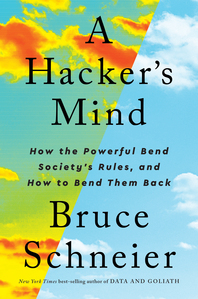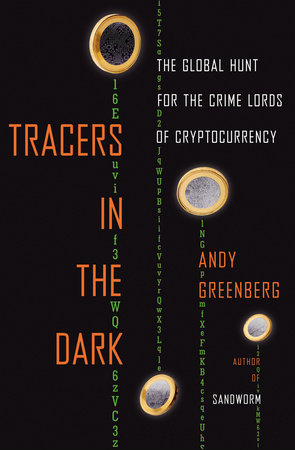As almost every media outlet has headlined this week, it is now ten years since Edward Snowden alerted the world to the real capabilities of the spy agencies, chiefly but not solely the US National Security Agency. What is the state of surveillance now? most of the stories ask.
Some samples: at the Open Rights Group executive director Jim Killock summarizes what Snowden revealed; Snowden is interviewed; the Guardian’s editor at the time, Alan Rusbridger, recounts events at the Guardian, which co-published Snowden’s discoveries with the Washington Post; journalist Heather Brooke warns of the increasing sneakiness of government surveillance; and Jessica Lyons Hardcastle outlines the impact. Finally, at The Atlantic, Ewen MacAskill, one of the Guardian journalists who worked on the Snowden stories, says only about 1% of Snowden’s documents were ever published.
As has been noted here recently, it seems as though everywhere you look surveillance is on the rise: at work, on privately controlled public streets, and everywhere online by both government and commercial actors. As Brooke writes and the Open Rights Group has frequently warned, surveillance that undermines the technical protections we rely on puts us all in danger.
The UK went on to pass the Investigatory Powers Act, which basically legalized what the security services were doing, but at least did add some oversight. US courts found that the NSA had acted illegally and in 2015 Congress made bulk collection of Americans’ phone records illegal. But, as Bruce Schneier has noted, Snowden’s cache of documents was aging even in 2013; now they’re just old. We have no idea what the secret services are doing now.
The impact in Europe was significant: in 2016 the EU adopted the General Data Protection Regulation. Until Snowden, data protection reform looked like it might wind up watering down data protection law in response to an unprecedented amount of lobbying by the technology companies. Snowden’s revelations raised the level of distrust and also gave Max Schrems some additional fuel in bringing his legal actions< against EU-US data deals and US corporate practices that leave EU citizens open to NSA snooping.
The really interesting question is this: what have we done *technically* in the last decade to limit government’s ability to spy on us at will?
Work on this started almost immediately. In early 2014, the World Wide Web Consortium and the Internet Engineering Task Force teamed up on a workshop called Strengthening the Internet Against Pervasive Monitoring (STRINT). Observing the proceedings led me to compare the size of the task ahead to boiling the ocean. The mood of the workshop was united: the NSA’s actions as outlined by Snowden constituted an attack on the Internet and everyone’s privacy, a view codified in RFC 7258, which outlined the plan to mitigate pervasive monitoring. The workshop also published an official report.
Digression for non-techies: “RFC” stands for “Request for Comments”. The thousands of RFCs since 1969 include technical specifications for Internet protocols, applications, services, and policies. The title conveys the process: they are published first as drafts and incorporate comments before being finalized.
The crucial point is that the discussion was about *passive* monitoring, the automatic, ubiquitous, and suspicionless collection of Internet data “just in case”. As has been said so many times about backdoors in encryption, the consequence of poking holes in security is to make everyone much more vulnerable to attacks by criminals and other bad actors.
So a lot of that workshop was about finding ways to make passive monitoring harder. Obviously, one method is to eliminate vulnerabilities, especially those the NSA planted. But it’s equally effective to make monitoring more expensive. Given the law of truly large numbers, even a tiny extra cost per user creates unaffordable friction. They called it a ten-year project, which takes us to…almost now.
Some things have definitely improved, largely through the expanded use of encryption to protect data in transit. On the web, Let’s Encrypt, now ten years old, makes it easy and cheap to obtain a certificate for any website. Search engines contribute by favoring encrypted (that is, HTTPS) web links over unencrypted ones (HTTP). Traffic between email servers has gone from being transmitted in cleartext to being almost all encrypted. Mainstream services like WhatsApp have added end-to-end encryption to the messaging used by billions. Other efforts have sought to reduce the use of fixed long-term identifiers such as MAC addresses that can make tracking individuals easier.
At the same time, even where there are data protection laws, corporate surveillance has expanded dramatically. And, as has long been obvious, governments, especially democratic governments, have little motivation to stop it. Data collection by corporate third parties does not appear in the public budget, does not expose the government to public outrage, and is available via subpoena any time government officials want. If you are a law enforcement or security service person, this is all win-win; the only data you can’t get is the data that isn’t collected.
In an essay reporting on the results of the work STRINT began as part of the ten-year assessment currently circulating in draft, STRINT convenor Stephen Farrell writes, “So while we got a lot right in our reaction to Snowden’s revelations, currently, we have a “worse” Internet.”
Illustrations: Edward Snowden, speaking to Glenn Greenwald in a screenshot from Laura Poitras’ film Prism from Praxis Films (via Wikimedia).
Wendy M. Grossman is the 2013 winner of the Enigma Award. Her Web site has an extensive archive of her books, articles, and music, and an archive of earlier columns in this series. Follow on Mastodon or Twitter.


